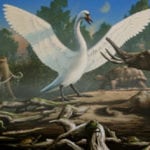 Mysteries
Mysteries  Mysteries
Mysteries  Creepy
Creepy 10 Scary Tales from the Middle Ages That’ll Keep You up at Night
 Humans
Humans 10 One-of-a-kind People the World Said Goodbye to in July 2024
 Movies and TV
Movies and TV 10 Holiday Movies Released at Odd Times of the Year
 Politics
Politics 10 Countries Where Religion and Politics Are Inseparable
 Weird Stuff
Weird Stuff 10 Freaky Times When Famous Body Parts Were Stolen
 Miscellaneous
Miscellaneous 10 Interesting Things Manufacturers Stopped Making and Why
 Gaming
Gaming 10 Funny Tutorials in Games
 History
History 10 Fascinating Little-Known Events in Mexican History
 Facts
Facts 10 Things You May Not Know about the Statue of Liberty
 Mysteries
Mysteries 10 Devastating Missing Child Cases That Remain Unsolved
 Creepy
Creepy 10 Scary Tales from the Middle Ages That’ll Keep You up at Night
 Humans
Humans 10 One-of-a-kind People the World Said Goodbye to in July 2024
Who's Behind Listverse?

Jamie Frater
Head Editor
Jamie founded Listverse due to an insatiable desire to share fascinating, obscure, and bizarre facts. He has been a guest speaker on numerous national radio and television stations and is a five time published author.
More About Us Movies and TV
Movies and TV 10 Holiday Movies Released at Odd Times of the Year
 Politics
Politics 10 Countries Where Religion and Politics Are Inseparable
 Weird Stuff
Weird Stuff 10 Freaky Times When Famous Body Parts Were Stolen
 Miscellaneous
Miscellaneous 10 Interesting Things Manufacturers Stopped Making and Why
 Gaming
Gaming 10 Funny Tutorials in Games
 History
History 10 Fascinating Little-Known Events in Mexican History
 Facts
Facts 10 Things You May Not Know about the Statue of Liberty
10 Extinct Animals Alleged To Still Be Alive
We told you previously about scientific efforts to bring extinct animals back to life. However, it turns out that the “extinct” classification isn’t always straightforward. Extinct animals keep being seen. Here are some of the more credible sightings.
10Woolly Mammoth
The Internet was abuzz (probably for entire hours) over a video of a bear with a fish in its mouth that found its way to YouTube. Tabloids (predictably) wondered “What if woollies are still around?” But there hasn’t been a sighting for about 100 years; in the 20th century, in other words. That seems odd considering the woolly died off 4,000 years go.
Yet, in 1920, a Frenchman told a fantastic story of seeing what certainly sounds like a mammoth in Siberia:
“It was a huge elephant with big white tusks that were very curved. Its hair was a dark chestnut color as far as I could see. It had fairly long hair on the hindquarters, but it seemed shorter in the front. I must say, I had no idea there were such big elephants! A second beast was around . . . it seemed to be at least as big as the first.”
As late as 1948, frozen mammoths were discovered with meat still fresh. That’s not exactly solid evidence, but given the vast wilderness of Siberia, it isn’t out of the question.
Every once in a while, unconfirmed reports will trickle out of the area, mentioning “elephant-like” creatures. Not exactly a confirmation, but it’s pretty hard to mistake an elephant for a moose, so maybe there’s something to it?
9Passenger Pigeon
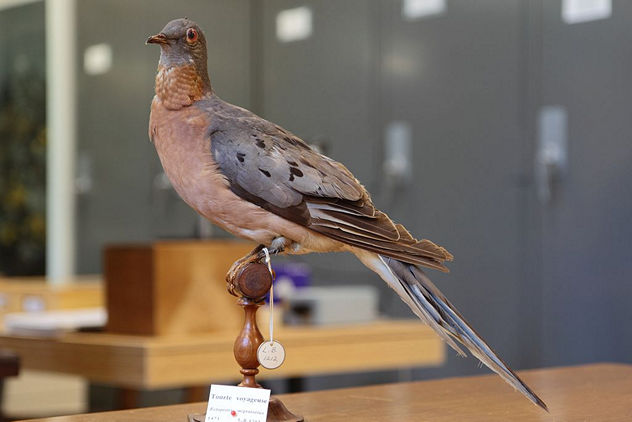
Passenger pigeons used to number in the billions. John James Audubon once watched a flock fly overhead for three days—300 million pigeons per hour. That’s a lot of birds. But the problem with there being so many is that they were very easy to hunt. Hunters, loss of habitat, and infectious diseases contributed to their eventual extinction.
Efforts to maintain small captive flocks failed, because the birds were used to living in much larger groups. The last passenger pigeon, named Martha, died in the Cincinnati Zoo in 1914.
Seven years after the passenger pigeon officially became extinct in the wild, a few were reportedly spotted by a fairly reputable person: US President Theodore Roosevelt. In 1907, while in Albemarle County, the first environmental President—who certainly knew his animal species—claimed he saw a small flock.
Nowadays, someone occasionally sees a bird that looks a lot like a passenger pigeon. Like this rather short video. Small flocks of passenger pigeons are sometimes seen in their old nesting areas, mostly around the Ozark Mountains.
It’s entirely possible that these smaller flocks survived. Too many people who know what they look like have seen passenger pigeons after their extinction date.
8Tasmanian Tiger
(Thylacine)
Tasmanian tigers were hunted for being a threat to livestock. Loss of habitat didn’t help much—settlers will do that to animals. The thylacine officially died off in 1936.
However, reported sightings are fairly common, as far as extinct animals go. They’ve been spotted in Tasmania and mainland Australia, although none of the sightings are scientifically confirmed. You’ll be happy to know that a few of the sightings were by sober people:
“In 1979, there was a much reported report of a Tasmanian tiger by fencing workers at Lang Lang early one morning. This is one of the few daytime reports, it was seen by several people and—very importantly—they hadn’t been drinking.”
There are almost a dozen more sightings. Part of the confusion is that many of these sightings come from mainland Australia, where the species have been extinct since the 1800s. And there’s some interesting footage out there as well (start at 2:35 in the above video). You can make the argument that what you see in the video is a dog with a limp, but there are those convinced it’s a Tasmanian tiger.
7Baiji
(Yangtze River Dophin)

The baiji were dolphins found exclusively in the Yangtze River. These dolphins were once plentiful, but have been doomed by the construction of the Three Gorges Dam and the increased boat traffic. The baiji were declared extinct in 2006.
But then one was spotted a mere year later. A team of scholars, led by scientist Wang Ding, confirmed the sighting. That’s positive news for the survival of the species.
Unfortunately, there’s only been that single sighting. A massive expedition of over 3,540 kilometers (2,200 mi) did not yield any further sightings. However, the Yangtze is rather long, so there’s always a chance that a few baiji can still be found.
6Japanese Wolf
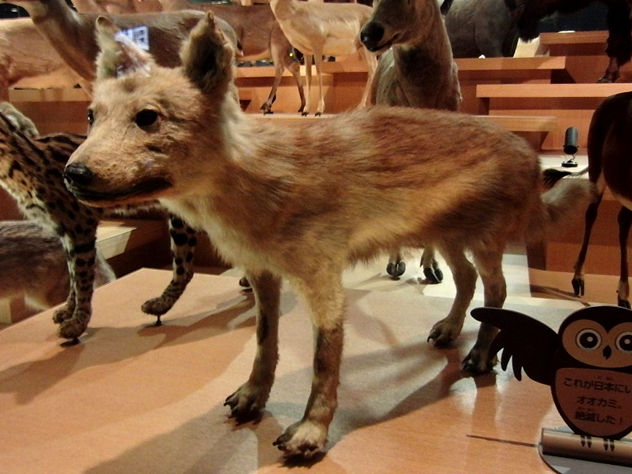
There are actually two types of the Japanese wolf: the Honshu wolf and the Hokkaido wolf. The Japanese wolf met its demise in the same way that many other animals did—at the hands of an American, for being a pest to livestock. A man named Edwin Dun, hired by the Japanese, dropped a little strychnine and greatly facilitated their downfall. The Honshu died off in 1905 and the Hokkaido in 1889.
Despite being dead, a Japanese wolf managed to turn up in 1910. And the 1930s. And, again, in the 1950s.
If that wasn’t enough, there have also been sightings in the 1990s. One theory is that the animals seen—and heard howling—are actually a wolf-dog hybrid. That’s certainly plausible, but are they a breeding population? Or is it more likely that the Japanese wolf is indeed still roaming the Japanese countryside?
5Ivory-Billed Woodpecker
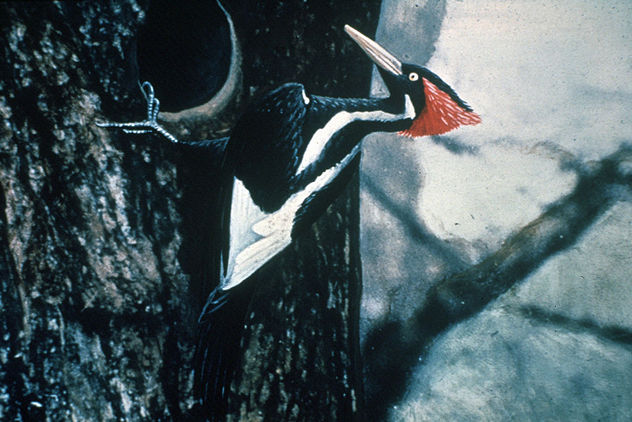
The ivory-billed woodpecker is a bit special—it never officially went extinct. It was declared extinct in the 1920s, only to be spotted throughout the 1940s. In the 1950s, it was again presumed extinct, so, naturally, it’s still seen today. In 2005, there have been some documented sightings in Arkansas, by a group of ornithologists. They recorded no fewer than 15 sightings of the ivory-billed woodpecker.
The fact that this group of ornithologists hailed from Cornell—an Ivy League school—would make you think the ivory-billed woodpecker was still flying. However, the ivory-billed woodpecker is a bit of a third rail in the bird world. A number of scientists doubt the veracity of the Cornell report.
Then again, people had been wrong about their extinction in the 1920s and the 1940s. The ivory-billed woodpecker could still be flying today.
4Eastern Cougar
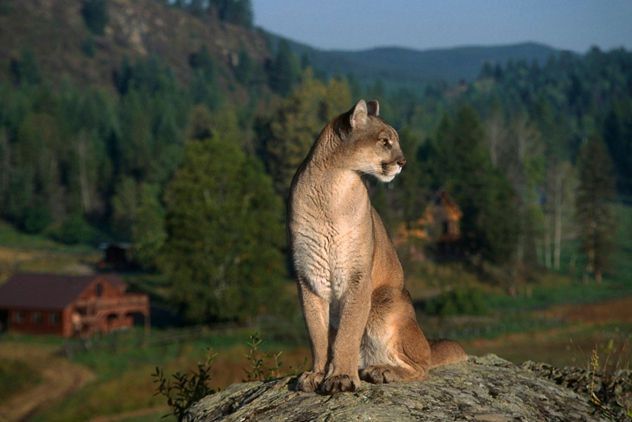
The Eastern cougar was declared extinct in 2011, which is rather odd, considering the enormous amount of sightings.
There are sightings in practically every East Coast state, and—of course—sightings after the 2011 declaration. There are entire websites dedicated to state-specific sightings.
People of New Hampshire saw and photographed a cougar that officially wasn’t there. There are also footprints, scat, fur—all the things you’d expect from a non-extinct animal. The Eastern cougar doesn’t seem to be too extinct at all.
3Japanese River Otter

The Japanese river otters became less common in the 1930s. By the time the 1970s rolled around, they were flat-out rare. Declared extinct in 2012, it took—you guessed it—a year for one to be sighted again.
Sightings are surprisingly common. In the first year since its “extinct” status, there have been 15 sightings. Most of these sightings are “unofficial.” However, getting a sighting recognized as “official” isn’t a simple thing; actual capture of the animal is usually required.
Scientists like to point out that most of the recently seen otters were spotted in areas they wouldn’t typically be—like polluted rivers. But wouldn’t an animal go where the easy food (or garbage) is, especially if its numbers are dwindling?
2Mexican Grizzly Bear
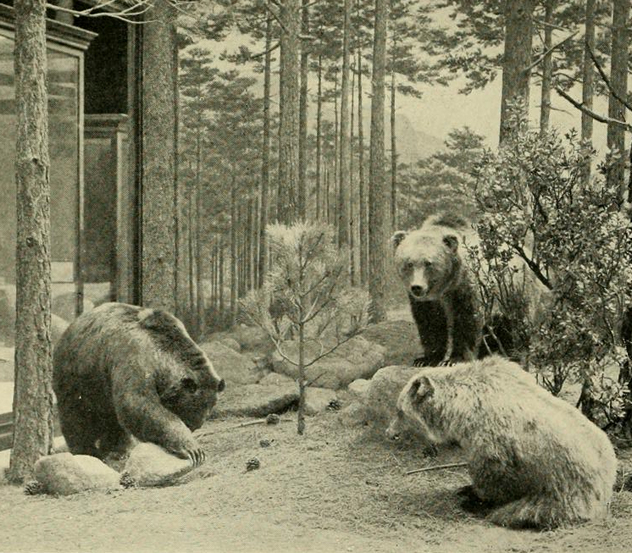
The Mexican grizzly bear ranged from Mexico to as far north as Colorado. It was widely believed that the last was killed in Mexico in 1960. They were officially declared extinct in 1964. Yet Mexican grizzlies continue to be spotted.
The North American grizzly is found much further north, but southern Colorado has a few credible sightings. There is an uptick in sightings of grizzlies in the former Mexican grizzly range.
There are definitely grizzlies in those parts. The only question is whether they’re Mexican grizzlies. A 1979 study—15 years after the extinction date—showed evidence of grizzlies (claw marks and footprints) in Mexico. The study also established that remote Mexico was a suitable habitat for grizzly bears.
1Javan Tiger
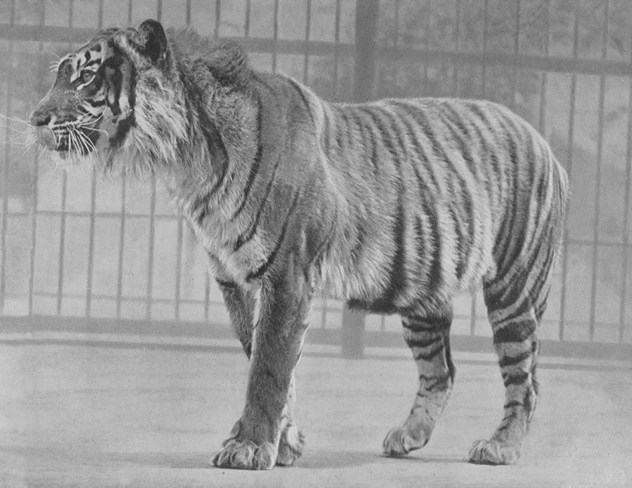
The Javan tiger was found on the Indonesian island of Java, fittingly enough. Hunting is the main reason why Javan tigers died off. When you’re on an island and you’re being hunted, there’s only so far you can go.
The last official citing of the animal occurred in 1976. However, they were allegedly captured throughout the 1980s. An exhaustive search in the mid-1990s lead to a 1994 declaration that the Javan tigers were extinct . . . until someone saw them a year later. In 1995, a Javan forester accidentally discovered a group of Javan tigers.
Sightings continued throughout the first decade of the 2000s. The Meru Betiri National Park—the site of the last confirmed sighting—seems to be the most likely spot for their survival. Activist Wahyu Giri Prasetyo is still finding evidence of the tiger—from hair to scat. He firmly believes the Javan tiger is alive.
Of all the extinct animals, the Javan tiger is probably the most likely to still be around.
+Mastodon

The mastodons have been extinct for 11,000 years. One theory is that they died off due to tuberculosis. Yet, according to one fantastic report, they have been seen as “recently” as 500 years ago.
In the 1560s, an Englishman named David Ingram ventured to the Americas. He walked over 3,218 kilometers (2,000 mi) in what is now the United States. He told fantastic tales of visiting Native Americans with gold jewelry and hairy elephants.
That’s right: He tells of mastodons thousands of years after they allegedly went the way of the dodo. It would be easy to dismiss his account, but he also accurately described the buffalo, and the general topography of the lands he said he visited.
Sure, there are unconfirmed reports of mastodon sightings floating around the Internet even in our times. However, it is curious that David Ingram managed to accurately describe a mastodon: He had no reason to think they lived in the Americas, nor did he know exactly what he was seeing at the time.
Jake wrote a trivia e-book filled with crazy stuff like the kind you just read in this list. You can follow him on Twitter for more useless facts.
